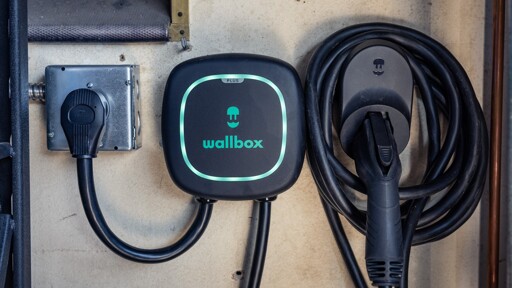To summarize: Requiring installation by electricians means that people will still DIY… They just won’t bother to get a permit/get it inspected.
Whereas allowing DIY encourages permits and inspection.
It also adds more fodder for insurance companies to try to not do their job
On one hand, it bothers me how inaccessible clear guidance on electric work is. There are so few open resources, and online questions seem to devolve into electricians gatekeeping information to protect the trade. On the other hand, browsing ev charging forums reveals one melted socket after another (not necessarily the result of DIY). The average person can be pretty flippant about the various ways these installations can go up in flames.
As an electrician, it’s difficult to give good electrical advice over the internet.
First of all, you don’t know how capable someone actually is at doing work. There’s both a knowledge and a technique requirement for quality work. Bad electrical work can easily cause house fires and death, if I tell someone online how to fix an issue, and they electrocute themselves or burn down their house, I’m partially responsible for that.
Second, it’s hard to give good advice on how something should be done without seeing it in person. Small details that are hard to get from a description or image can change how stuff is required to be done, and the code is complicated and has lots of exceptions and different requirements. Also different areas have different code requirements, and different AHJ requirements, so fully accurate advice has to come from an electrician in your actual area.
Final thing I’ll mention is that getting qualified as an electrician is hard. Getting a full electrical license where I live requires 8 years of experience (4 years being directly supervised, then 4 years of light supervision). You also have to pass a pretty difficult exam, electricians usually spend 6+ months studying hard and taking training classes for the exam, and then it still has an abysmal first attempt pass rate and normally takes many attempts to eventually pass. Ultimately after all of that (8 years, months of focused study and classes, multiple test attempts), 25-30% of people are never able to pass and get their full license.
With all that considered, I’m happy to give advice to other electricians online. If they’re already certified I can have some confidence that they have the knowledge and skills to do a good job with any advice given. However trying to give actually good, responsible advice to someone who is uncertified and a complete unknown on terms of skill/knowledge/location with only a partial knowledge of their problems and setup, it’s hard. It’s much easier to recommend they just get a licensed electrician from their area to take a look at it.
If you are curious, the national electric code is freely available on the website, albeit in a slow and page by page online viewer. Equipment manufacturers will also often give installation manuals that can be reviewed and combined with the NEC for a decent understanding.
Ugly’s and other companies do pretty affordable handbooks or small books that summarize electrical info/calculations, or wiring methods from the code.
But overall, national code standards are written in blood, and the NEC is made through the NFPA, National Fire Protection Agency. Their intentions are to prevent fires, and that guiding principle leads to code changes.
You have to be careful about that too, the code isn’t written to be easily understood by casual reading.
For example, the code will describe your hot, neutral, and ground wires as “ungrounded, grounded, and grounding” wires. Applying rules meant for a “grounding” wire to a “grounded” wire can have serious issues.
The whole code is written like that, where it’s really easy to get confused if you don’t understand the exact terminology it uses.
I mean it’s better than nothing I guess but that is not what I’d call “freely available.” In addition to requiring that you use their shitty online viewer, it appears to require users to sign in to an account even to do that. It’s directly admitted on the website that they make it unusable in this way specifically because they rely on the revenue from selling real access to people who need it.
Eh what blood got AFCIs in there? Green blood from Siemens and Eaton as far as I can tell
On the other hand, browsing ev charging forums reveals one melted socket after another
Often this is due to using portable chargers that someone is frequently plugging/unplugging in a socket designed for appliances that stay plugged in. You can’t cheap out on the 14-50 socket and sadly people often do
A recent Technology Connections video mentioned people are configuring chargers to 48 A when they’re using 14-50 “50 A” sockets that are really designed for 40 A continuous current. Or they’re using aluminum wiring without corrosion protection, or not abrading the oxide layer.
Oh for sure that too. Also that was a great video.
From what I’ve read, repeated plugging/unplugging is not the most likely failure mode. Definitely some issues with cheap sockets though that aren’t realistically capable of carrying the continuous load.
The change is regarding “permanent” installations, which the article also infers to mean directly hardwired. Those of us who go the route of a NEMA 14-50 outlet are likely unaffected.
That said, I wish they’d ban the cheap, shitty outlets that can’t actually provide continuous power. These are the very popular $10 outlets, vs the $50 ones that also can’t fit in a standard box.
if it’s permanently installed high power device, it only makes sense to wire it directly, like it’s done with ovens, and EV charger draws even more power. why there’s even plug on the way there? it’s not gonna be moved anyway. and while we’re at, why you people don’t have three phase circuits for big loads like this? standard euro five wire three phase 32A circuit (or plug) gets you 22kW, that plug tops off at 9kW
Ovens are all plugs, at least in the US.
The code allows for a disconnect switch near the oven instead. I’ve never seen this in residential applications though.







